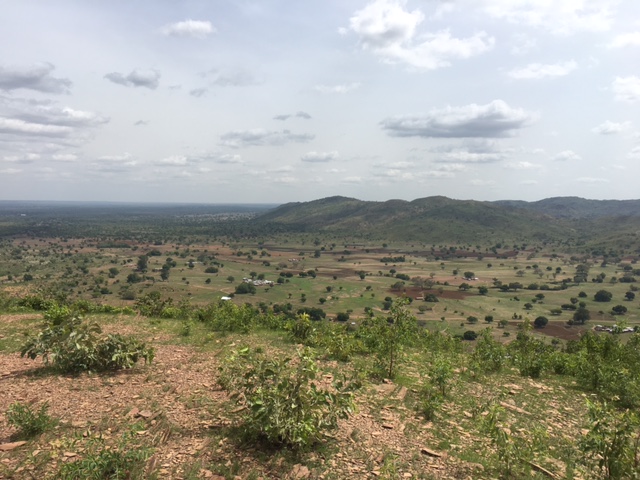Landscape restoration creates opportunities for securing the land and natural resource rights of local land users as well for improving soil health, sequestering carbon, and enhancing biodiversity. In order to achieve synergies between these interrelated aims, restoration practitioners must carefully consider how projects are managed, particularly with regard to supporting equity in project design and planning—the focus of this blog.
Our recent community-level study in northeastern Ghana (see also here for a shorter practice brief), which investigated the social equity of an agroforestry initiative known as farmer-managed natural regeneration (FMNR), underscored the intersection of tenure- and environmental-related dynamics within an agricultural land restoration context. FMNR involves using techniques to support the natural regeneration of trees and shrubs in agricultural fields and therefore rights to trees—often separable from those of land—were very important. As part of a just-published special issue, whose articles illustrate why ecosystem restoration should be socially equitable and inclusive, our study added to the growing body of evidence on why land and tree tenure should be assessed prior to the implementation phase of projects in view of—among other things—understanding which stakeholders experience tenure insecurity.
Efforts to integrate tenure assessments into the design and planning stages of landscape restoration projects have received support, for instance, with tools such the IUCN/WRI Restoration Opportunities Assessment Methodology (ROAM). However, as McLain et al. (2021) recently discuss, there is much room for improvement in this area. Based on their analysis of ROAM within the context of Forest Landscape Restoration (FLR, an integrated landscape approach), they conclude that more attention should be directed to assessing rights to land in practice rather than simply rights in law (see also here). Their conclusion is especially relevant in legal pluralist contexts—such as in most of rural sub-Saharan Africa—where multiple forms of law might coexist, customary land governance structures might remain strong, and statutory land law might exert weak influence over local land user decision-making.
McLain and colleagues, similar to others, underline how tenure insecurity might militate against efforts to restore degraded landscapes. Our study of the land restoration project in northeastern Ghana substantiated this position. We found that the potential for local land users to experience agroforestry benefits were influenced by preexisting hierarchies in authority, control and access over trees and land, thus affirming the significance of socio-historical dynamics in an agricultural land restoration context.
Secondary rightsholders, which at our study site included migrant farmers and mobile pastoralists (mainly Fulani), were especially vulnerable to marginalization when it came to project design and planning. For instance, one component of the project involved the establishment of a site within each community at which local residents could use FMNR to manage trees and shrubs. However, we found in one community that migrant farmers—as secondary rightsholders—were excluded from the decision-making process regarding site selection. We also found that mobile pastoralists, despite their role in managing land and trees within the landscape—including for wealthy farmers and town-based elites—were excluded from all project phases and maintained precarious land use rights within the region.
It should not be assumed that simply integrating support for land formalization into the design of a restoration project is the solution to mitigating trade-offs and supporting equitable outcomes. Restoring landscapes and securing land and natural resource tenure for local stakeholders are complex processes, particularly in areas such as northeastern Ghana, characterized by spatially and temporally differentiated land use practices and resource management and tenure systems. Not only does evidence demonstrate that tenure might be secure in some cases without formalization, but land formalization through, for instance, tree-planting projects, might even incentivize land grabbing by elites.
A key conclusion we drew from our study of FMNR in northeastern Ghana was that conducting a tenure assessment as part of project planning would have facilitated a more robust understanding of how land and tree tenure differences between local stakeholders were influenced by factors that were social (e.g. differences between primary and secondary rightsholders), spatial (e.g. differences between rights to trees in permanently cropped village fields and “bush” fallows), and temporal (e.g. rights to land might differ when fields are fallowed). Our conclusion points to the importance of equitably developing synergies between tenure and restoration objectives through projects and programs—particularly when leveraging local knowledge systems and practices—which are then supported by policies enabling cross-sectoral and multi-level stakeholder collaboration.

